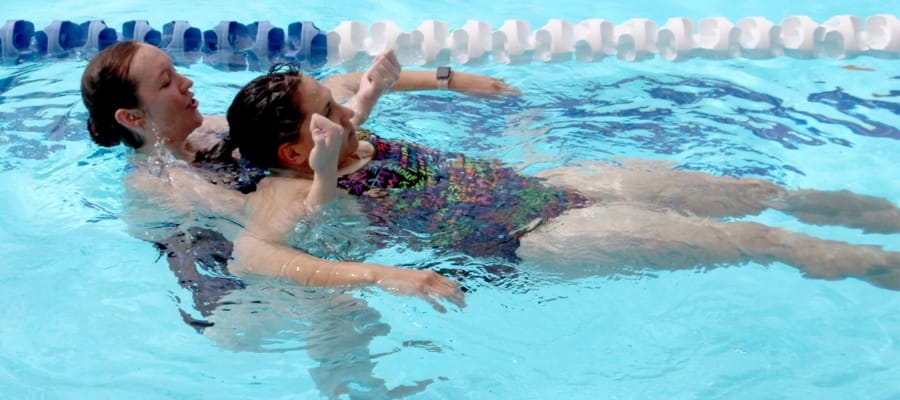
When performing a rescue of someone in danger, a contact tow is the last rescue technique chosen when all other options have proven ineffective or are not appropriate. To perform a contact tow, it’s important to firstly determine the potential risk to yourself and assess whether you are physically fit and strong enough to carry out this technique safely.
An effective contact tow must:
- Always keep the person’s mouth above water.
- Enable the rescuer and the person being towed to be as horizontal as possible to keep resistance to a minimum.
- Allow freedom for the rescuer’s swimming movements.
- Make only reasonable demands upon the rescuer’s stamina and strength consistent with the water conditions and distance to be covered.
- Control the unconscious person’s head position so that the airway can be kept open, and water does not wash over their face.
To safely perform and carry out rescue, the following tows can be used with the following conditions:
Cross Chest
When conditions are rough
Head Tow
A firm hold of the unconscious casualty’s head is required
Clothing Tow
The unconscious person is clothed, and the conditions are calm.
Double
Entry is required from a height of more than one metre into known deep water. It is recommended to use a feet-first entry over a head-first entry as this is a safer method.
Armpit Tow
Used when it is necessary to control the body position of the unconscious person and the rescuer does not have the swimming power to perform a cross chest tow.
Double Shoulder Tow
Used when it is necessary to maintain a higher head elevation of the unconscious person. It is of benefit in rough water although more propulsive power on the part of the rescuer is required.
Vice Grip Tow
Should be used when it is suspected the person in difficulty could have a spinal injury.
Support Tow
This technique is particularly useful for those who are unconscious and not breathing, as it supports the head, allowing it to be kept clear of the water
Wrist Tow
If the person in difficulty is conscious, entirely cooperative, and all other rescue methods are unsuccessful, a wrist tow can be used.
Note: NEVER use a wrist tow with an unconscious swimmer. A wrist tow does not maintain an open airway.
It is important that you understand the risks involved with rescues and make an assessment of the water and the conditions to determine the most appropriate method.
For more information on preforming rescues, check out the Swimming and Lifesaving Book!